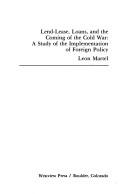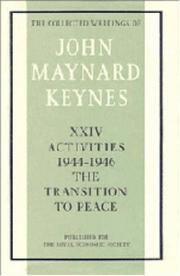| Listing 1 - 10 of 15 | << page >> |
Sort by
|
Book
Year: 2017 Publisher: [Place of publication not identified] : Great Neck Publishing,
Abstract | Keywords | Export | Availability | Bookmark
 Loading...
Loading...Choose an application
- Reference Manager
- EndNote
- RefWorks (Direct export to RefWorks)
Book
Year: 2017 Publisher: [Place of publication not identified] : Great Neck Publishing,
Abstract | Keywords | Export | Availability | Bookmark
 Loading...
Loading...Choose an application
- Reference Manager
- EndNote
- RefWorks (Direct export to RefWorks)
Book
Year: 2017 Publisher: [Place of publication not identified] : Great Neck Publishing,
Abstract | Keywords | Export | Availability | Bookmark
 Loading...
Loading...Choose an application
- Reference Manager
- EndNote
- RefWorks (Direct export to RefWorks)

ISBN: 0891584536 Year: 1979 Publisher: Boulder (Colo.) : Westview Press,
Abstract | Keywords | Export | Availability | Bookmark
 Loading...
Loading...Choose an application
- Reference Manager
- EndNote
- RefWorks (Direct export to RefWorks)
Lend-lease operations (1941-1945). --- World War, 1939-1945 --- Influence. --- United States --- Soviet Union --- Foreign relations
Book
Year: 1952 Publisher: Washington, D. C. : Office of the Chief of Military History, Department of the Army,
Abstract | Keywords | Export | Availability | Bookmark
 Loading...
Loading...Choose an application
- Reference Manager
- EndNote
- RefWorks (Direct export to RefWorks)
World War, 1939-1945 --- Lend-lease operations (1941-1945) --- United States. --- History
Book
ISBN: 1476612900 Year: 2014 Publisher: Jefferson, North Carolina : McFarland & Company, Inc., Publishers,
Abstract | Keywords | Export | Availability | Bookmark
 Loading...
Loading...Choose an application
- Reference Manager
- EndNote
- RefWorks (Direct export to RefWorks)
"Here is an overview of America's first effort in military aid to a foreign sovereign nation at a time when Europe was engaged in open warfare and Asia was undergoing a series of military confrontations"--
Lend-lease operations (1941-1945) --- International cooperation --- Military assistance, American --- World War, 1939-1945 --- History --- Diplomatic history. --- United States. --- History. --- United States --- China --- Relations
Book
ISBN: 1282505416 9786612505416 0739160540 9780739160541 9780739160541 9780739145630 9780739107362 Year: 2010 Publisher: Lanham, Md. : Lexington Books,
Abstract | Keywords | Export | Availability | Bookmark
 Loading...
Loading...Choose an application
- Reference Manager
- EndNote
- RefWorks (Direct export to RefWorks)
Russia's Life-Saver brilliantly examines the diplomatic rationale for and results of the U.S. decision to grant over 12 billion in Lend-Lease aid to Soviet Russia during World War II. Author Albert L. Weeks wields many facts and statistics never before published in the U.S. Of particular interest is the statement by Soviet Army Marshal Georgy K. Zhukov that U.S. Lend-Lease aid was indispensable, despite Soviet propaganda that sought to minimize its importance.
Lend-lease operations (1941-1945). --- Soviet Union -- Foreign relations -- United States. --- Soviet Union -- Military relations -- United States. --- United States -- Foreign relations -- Soviet Union. --- United States -- Military relations -- Soviet Union. --- World War, 1939-1945 -- Equipment and supplies. --- Lend-lease operations (1941-1945) --- World War, 1939-1945 --- Equipment and supplies. --- United States --- Soviet Union --- Foreign relations --- Military relations
Book
ISBN: 142143072X 1421430711 142143105X Year: 2019 Publisher: Johns Hopkins University Press
Abstract | Keywords | Export | Availability | Bookmark
 Loading...
Loading...Choose an application
- Reference Manager
- EndNote
- RefWorks (Direct export to RefWorks)
Originally published in 1969. In The Most Unsordid Act, Warren Kimball provides a history of the Lend-Lease idea. The genesis and development of the Lend-Lease idea, although spanning less than two years, offers a subject of the broadest significance for major questions of democratic government and society. The story begins with the United States' growing recognition of the British monetary and gold shortage and ends with the passage of the Lend-Lease Act and the American commitment that it involved. Dr. Kimball's narrative—chronological, detailed, and dramatic—includes analyses of the domestic and international concerns on both sides of the Atlantic and of the roles of the leading protagonists: President F. D. Roosevelt and Treasury Secretary Morgenthau, as well as Stimson, Hull, Churchill, and key British representatives. He also examines the possibility that Lend-Lease was designed to benefit the American economy at Britain's expense. A central question animates Kimball's account: How could a president who recognized the ultimate threat of Nazi Germany, but shared his nation's desire to avoid war, find a way to help an ally? The portrait of Roosevelt that emerges is instructive in view of revisionist histories that present him as a Machiavellian figure disingenuously leading his country to war. Kimball sees him, rather, as an essentially domestic president whose experiences and interests evolved from national concerns—as a man unschooled in international affairs, eager to avoid confrontation with his congressional opposition, wary of the British penchant for power politics, given to procrastination when faced with difficult problems, and anxious to avoid full-scale war. Yet, the administration's legislative strategy and the debate over the Lend-Lease Act clearly demonstrated that the president, his closest advisers, and the Congress were aware that the legislation would inevitably mean war with Germany. Based on such sources as the diaries of Morgenthau, the State Department Archives, Foreign Economic Administration records, the Stimson papers, and interviews with participants, this study provides insights that raise central questions about the functioning of the American system of government.
Lend-lease operations (1941-1945) --- United States --- Politics and government --- Lease-lend operations --- World War, 1939-1945 --- Economic assistance --- Lend-lease operations --- Economic aspects --- Equipment and supplies --- Finance --- History of the Americas

ISBN: 1139520172 0521220173 1107681154 Year: 2013 Publisher: Cambridge : Cambridge University Press for the Royal Economic Society,
Abstract | Keywords | Export | Availability | Bookmark
 Loading...
Loading...Choose an application
- Reference Manager
- EndNote
- RefWorks (Direct export to RefWorks)
In this volume, the third of three concerned with Keynes's involvement in the problems of financing Britain's war effort after 1939, the concentration is on the final stages of lend lease and the negotiations with the United States for the transition to peacetime conditions and the 1945 loan to Britain.
Business & Economics --- Economic Theory --- World War, 1939-1945 --- Reconstruction (1939-1951) --- Lend-lease operations (1941-1945) --- Finance --- Lease-lend operations --- Economic assistance --- Lend-lease operations --- Economic aspects --- Equipment and supplies
Book
Year: 1944 Publisher: New York : Editions transatlantiques,
Abstract | Keywords | Export | Availability | Bookmark
 Loading...
Loading...Choose an application
- Reference Manager
- EndNote
- RefWorks (Direct export to RefWorks)
Lend-lease operations (1941-1945) --- World War, 1939-1945 --- Prêt-bail, Opérations du (1941-1945) --- 2ème guerre mondiale --- 2eme guerre mondiale --- Economic aspects --- Finance --- Aspect économique --- Finances
| Listing 1 - 10 of 15 | << page >> |
Sort by
|

 Search
Search Feedback
Feedback About UniCat
About UniCat  Help
Help News
News